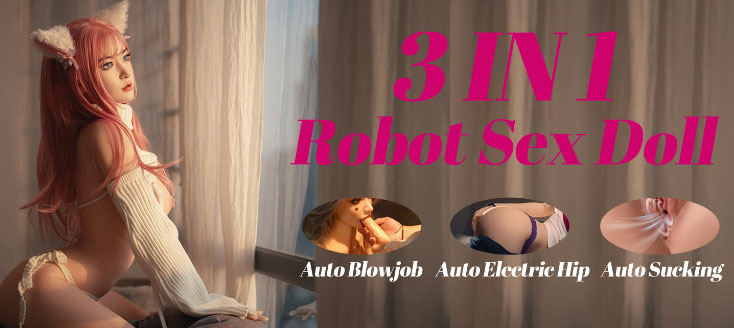How do people feel about sex dolls that can interact with pets or other animals in the home?
The concept of sex dolls that can interact with pets or other animals in the home raises a unique set of feelings and perspectives among users and society at large. Here’s an in-depth exploration of how people feel about this idea, considering various aspects such as emotional impact, safety, companionship dynamics, and ethical considerations.
1. Enhancing Companionship
- Multi-Faceted Companionship: Many users believe that sex dolls capable of interacting with pets can enhance the companionship experience. For individuals who live alone or have limited human interaction, the presence of both a doll and a pet can create a more fulfilling home environment. The idea that the doll can engage with pets adds a layer of complexity to the companionship dynamic, allowing for a more interactive living situation.
- Social Engagement: Users appreciate the concept of a doll that can engage with their pets, as it may lead to a more social and lively home atmosphere. This interaction can stimulate pets, reducing their boredom and improving their emotional well-being. The presence of a doll that plays or interacts with pets can provide additional entertainment and companionship for both the owner and their animals.
2. Concerns About Safety and Well-Being
- Safety of Pets: One of the primary concerns surrounding this concept is the safety of pets. Users are wary about the potential risks associated with having a sex doll that interacts with animals. There are fears that the materials used in the dolls may be unsafe for pets, particularly if they chew or bite at the doll. Users want assurances that any interactions are safe and that the dolls are made of non-toxic materials.
- Behavioral Changes in Pets: Some pet owners express concern that a doll interacting with their pets could lead to behavioral changes. For example, pets may become possessive, confused, or jealous of the attention given to the doll. This could alter the dynamic of the household and impact the bond between pets and their owners. Users want to ensure that the interaction is positive and does not lead to unwanted behavioral issues.
3. Technology and Interaction Quality
- Realistic Interaction: Many users are interested in the level of realism in the interactions between dolls and pets. They desire features that enable the dolls to mimic realistic behaviors or responses that engage pets in a meaningful way. Users may feel more positively about the concept if the technology allows for dynamic interactions that reflect genuine engagement rather than just mechanical movements.
- Programmable Behaviors: Some users envision the potential for programmable behaviors in dolls that allow them to adapt their interactions based on the specific pet’s behavior and needs. This could create a more harmonious household environment where pets feel acknowledged and entertained.
4. Impact on Human-Animal Relationships
- Companionship Balance: Users often reflect on how the introduction of a doll that interacts with pets might affect their relationships with both the doll and their animals. They emphasize the importance of maintaining a healthy balance, ensuring that human and animal interactions remain a priority while enjoying the additional engagement offered by the doll.
- Jealousy and Competition: Concerns about jealousy and competition for attention between pets and the doll are common. Users worry that pets may feel neglected or threatened by the presence of a doll, particularly if it appears to receive a significant amount of interaction and attention.
5. Ethical Considerations
- Animal Welfare: There is a growing awareness regarding the ethical implications of introducing a technology that interacts with living beings. Users feel strongly about ensuring that any interaction is respectful and considerate of the animal’s feelings and needs. They advocate for clear guidelines and standards for how these dolls should interact with pets to promote positive outcomes.
- Consent and Understanding: The idea of “consent” becomes more complicated when involving animals. Users express the importance of recognizing that pets cannot provide consent in the same way humans can. This highlights the need for responsible design and interaction protocols that prioritize the welfare and comfort of pets.
6. Market Demand and Development
- Interest in Novelty: Users show interest in the novelty of dolls that can interact with pets, seeing it as a potential market niche. They believe that innovations that include this functionality could appeal to pet owners who are looking for unique ways to enhance their home environment and entertain their animals.
- Future Innovations: Many users hope for advancements in robotics and AI that allow for deeper, more meaningful interactions between dolls and pets. They envision future products that can seamlessly integrate into the household, offering companionship not just to the owner but also to their furry friends.
7. Public Perception and Stigma
- Shifting Attitudes: The introduction of sex dolls that interact with pets could contribute to shifting societal perceptions regarding the use of such dolls. Users believe that if the focus is on companionship and enhancing the quality of life for both humans and pets, it may help reduce stigma around sex dolls.
- Normalization of Technology: As technology continues to evolve and permeate various aspects of life, users feel that the integration of dolls that interact with pets may become more normalized. This could lead to broader acceptance of advanced companionship technologies in everyday life.
Conclusion
Overall, the concept of sex dolls that can interact with pets resonates with users in a variety of ways. While there is enthusiasm about the potential for enhanced companionship and engagement, concerns about safety, animal welfare, and behavioral dynamics remain prominent. As technology develops and societal attitudes evolve, the exploration of how these dolls can positively impact home environments will likely continue, emphasizing the importance of responsible design, ethical considerations, and user education.
Engaging both pets and dolls in a household setting opens up new avenues for companionship, but it also requires careful thought about the implications of such innovations.

